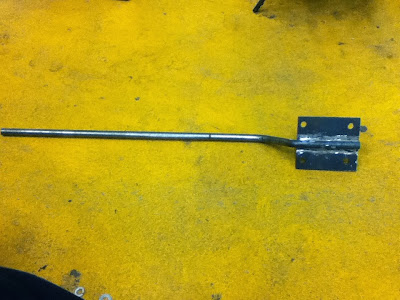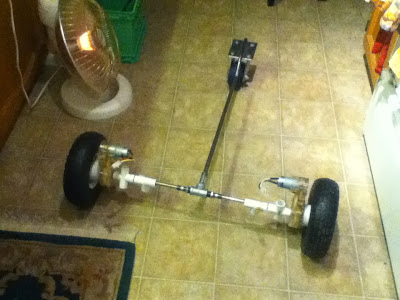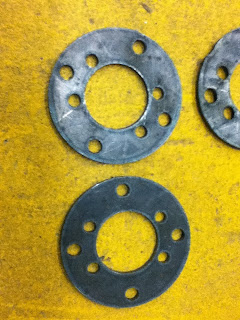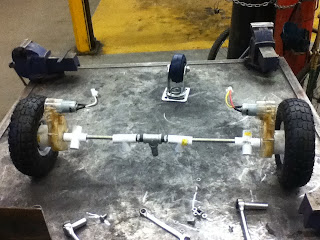And I took it outside for another test (these videos probably should have been edited into one continous one, but the computer I'm on right now doesn't have any video editing software)
Of course, Murphy's law was in full effect during the filming, I would turn the camera on, film for a bit, a wire would get dislodged, and it would start acting funkey. stop filming, fix the wire, and it worked fine until turned the camera back on. I did have it working a little longer than the footage shows, but, of course, no footage of it :)
Well, Project Killzone is my largest project to date, and with a big bot like this, I have learned some new things, chiefly, you can't just slap an arduino and some assorted electronics on the back of something this size, plug the wires into those headers, and expect them not to pull out and ruin your filming. So next time I take this guy outside for some testing, I will have some proper (well, proper-ish) strain reliefs on all the wires, and probably a nice electronics box too. Next steps will be mounting the paintball gun+servo for the trigger (I got a nice remote line for Christmas, so I will be able to have my paintball gun tank mounted somewhere besides the very end of the gun) and getting the speed control functioning on the motor controllers. My leftover motor controller from GPS was having some problems, so I cut off the speed control section and just left the relay portion untouched. I will be re-adding the speed control part after I figure out if my MOSFETs are still good, and get around to building a driver circut for them. Speaking of which, I am contemplating making a picaxe driver board to turn my dumb motor controller into a smart one, just make it accept 2 R/C signals and take care of all the messy relay and MOSFET driving. But that is a topic for another post.
PK as he stis now:


































